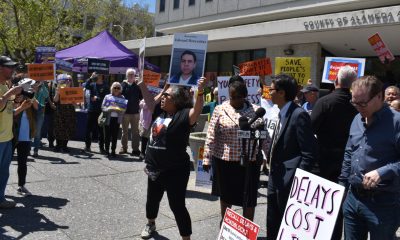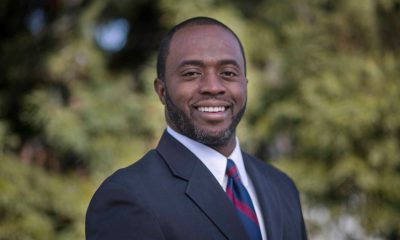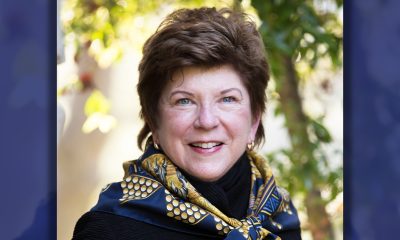Community
Supervisors delay decision on women’s jail for three weeks
WAVE NEWSPAPERS — The county’s plan to retrofit an immigration detention center in Lancaster as a women’s jail,seems likely to be abandoned in its current form.
LOS ANGELES — The county’s plan to retrofit an immigration detention center in Lancaster as a women’s jail, long opposed by criminal justice advocates, seems likely to be abandoned in its current form based on the lack of support from the Board of Supervisors Jan. 8.
A vote to approve a $215 million budget for Mira Loma Detention Center and award a design-build construction contract to San Fernando Valley-based Bernards Bros. Inc. was postponed at the request of Supervisor Sheila Kuehl.
The matter is set to come back before the board in three weeks, but Kuehl said she would not vote to build on the site — which is roughly 70 miles north of downtown Los Angeles — and Supervisor Hilda Solis said changes would need to be made to the plan before she would support it.
Funding for the project requires four votes from the five-member Board of Supervisors.
“The location of the proposed women’s jail at Mira Loma poses significant, and in my opinion, insurmountable obstacles to our goal of creating a women’s jail that is the centerpiece of a gender-responsive corrections system,” Kuehl said Jan. 7. “Mira Loma is too far away from the home communities of the women who would be housed there, and too far away from family members who would need to visit.”
Solis said she is committed to finding strategies that encourage family reunification and lower recidivism rates, but stopped short of saying she would never support a plan to build in Lancaster.
“L.A. County should be on the forefront of diversion and rehabilitation, rather than punishment than incarceration,” Solis said.
The board approved the project in concept in 2015, though Solis abstained from the vote and both she and Kuehl called then for strategies to overcome the challenges posed by the facility’s location.
The JusticeLA Coalition declared victory as members stood outside the Kenneth Hahn Hall of Administration in orange T-shirts with the slogan “can’t get well in a cell” emblazoned on the back.
“We can finally claim this victory after seven years,” Eunisses Hernandez of JusticeLA said, drawing cheers.
Coalition speakers urged the board to invest in community resources that could reduce the numbers of arrests and jail time by treating mental illness, providing jobs and educating young people.
Supervisor Janice Hahn, who chairs the board, said the decision to delay a vote and rethink the jail plan was made by the board as a whole.
“It was a collective will to put the brakes on, to take a step back and to pause,” Hahn said. “There is a new sheriff in town who also has some ideas. … He also would like to weigh in.”
Sheriff Alex Villanueva has talked about reducing the jail population and finding alternatives to incarceration and many advocates of reform see him as a potential ally.
“We have a sheriff who does not want to build and that is unprecedented,” Mark-Anthony Johnson of Dignity & Power Now told the board, after thanking them for “challenging the conventional wisdom that this was just a done deal.”
Villanueva is working on alternatives to discuss with the board, Sheriff’s Department spokeswoman Nicole Nishida told City News Service.
But it’s not clear whether the board and the sheriff are willing to go as far as criminal justice advocates would like. For activists, it isn’t simply a question of where the jail is built.
“The ask is not for a better women’s jail, it’s for meaningful and real alternatives to incarceration,” said community activist Kristina Lear. “I’m not asking for a relocation, I’m asking for a halt to it.”
Esther Lim of the American Civil Liberties Union of Southern California said the county didn’t do enough front-end analysis on who needs to be jailed versus who needs diversion and treatment, pointing out that one of the most detailed studies behind the jails plan was provided by a construction management firm.
It’s time to “reexamine what criminal justice looks like here in Los Angeles,” Lim told City News Service.
Before the board, Lim pointed out that Mira Loma is not the only jail slated for construction.
The proposed Consolidated Correctional Treatment Facility “is a mistake that will cost us billions of dollars,” Lim said.
A $2.2 billion Consolidated Correctional Treatment Facility is planned to replace the crowded, decrepit Men’s Central Jail and provide better treatment and more humane conditions for the roughly one-third of inmates who have mental health issues.
The county Department of Public Works had recommended increasing the Consolidated Correctional Treatment Facility budget by roughly $30 million and awarding a contract to McCarthy Building Companies Inc. A vote on that item was also postponed for three weeks at the department’s request.
“If you’re going to take Mira Loma off the table, we need to look at the entire jail plan,” Supervisor Kathryn Barger told her colleagues.
Lancaster is in the district she represents, but Barger said she had no issue with choosing another location for a women’s jail in downtown Los Angeles or elsewhere.
As for the existing Lancaster detention center, “I’d love to flatten it and put in affordable housing tomorrow,” Barger said.
But she also warned the board that $100 million in state funding for the project was at stake.
The county has also spent roughly $8 million on planning for the Mira Loma project, according to a Department of Public Works spokesman.
While everyone on the board agreed with the need to rethink the plan, at least with regard to Mira Loma, no one offered a specific alternative.
Supervisor Mark Ridley-Thomas reminded his colleagues that one of the reasons for updating the county jail system is to comply with Department of Justice concerns about the treatment of suicidal and mentally ill inmates.
“This discussion is at least 15 years old. Four governors later, 10 members of the Board of Supervisors later … we have yet to land,” Ridley-Thomas said. “What then are we prepared to construct?”
Even Kuehl, who was willing to take the strongest stance against Mira Loma, maintained her support for the men’s jail project, saying it would improve the treatment and rehabilitation of mentally ill jail inmates.
But Lim and other advocates argued that most of those inmates are behind bars for non-violent offenses and could be diverted into community-based programs where they would have a better chance of leading productive lives.
Johnson estimated that the county could divert about 10,000 individuals annually into community programs rather than jailing them and said the vast majority of the county’s diversion programs had not yet been implemented.
To date, the county has diverted roughly 2,500 offenders through its Office of Diversion and Reentry.
This article originally appeared in the Wave Newspapers.
Alameda County
Board of Supervisors Accepts Certification of Signatures, Will Schedule Recall Election May 14
The Alameda Board of Supervisors unanimously accepted the certification of the results of the valid signatures submitted for the recall of District Attorney Pamela Price on Tuesday evening. The Board will set the election date at a special meeting on May 14. Before the meeting, recall proponents and opponents held separate press conferences to plead their cases to the Board and residents of Alameda County.
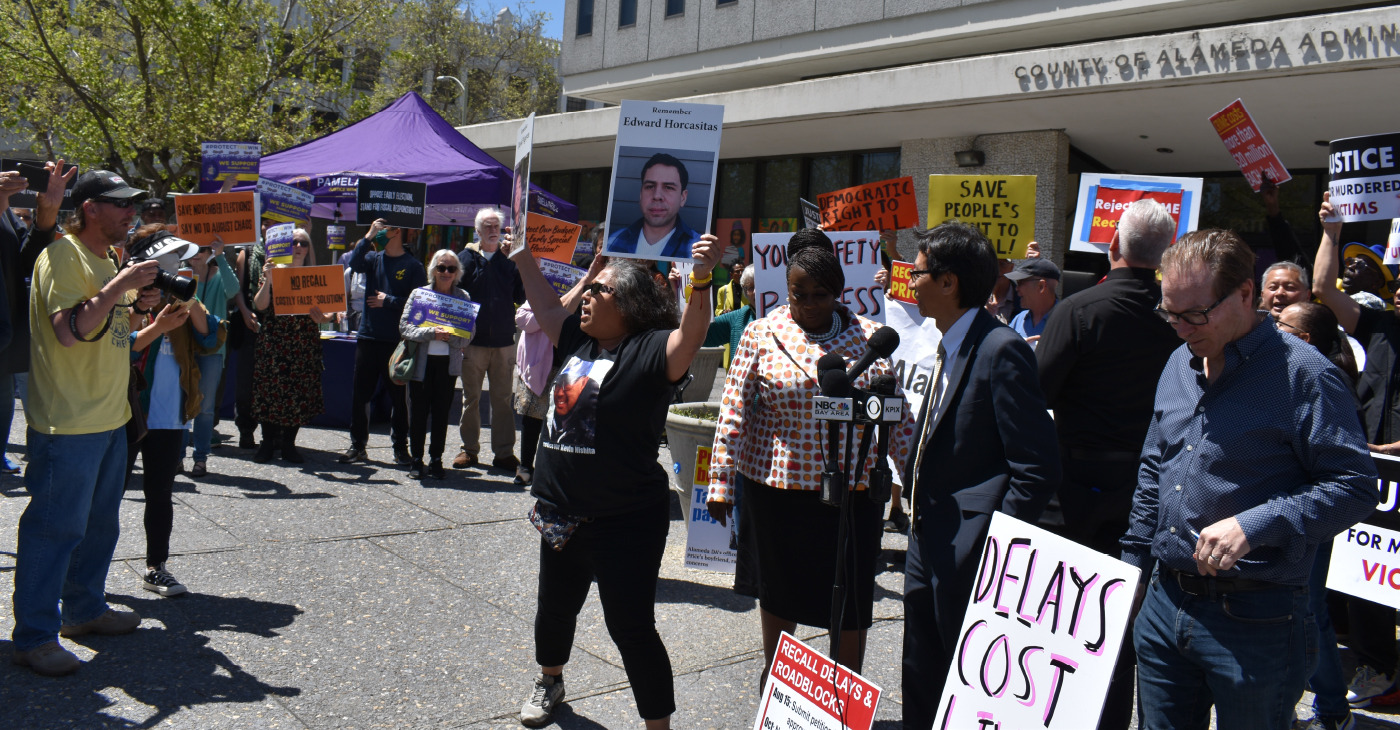
By Magaly Muñoz
The Alameda Board of Supervisors unanimously accepted the certification of the results of the valid signatures submitted for the recall of District Attorney Pamela Price on Tuesday evening. The Board will set the election date at a special meeting on May 14.
Before the meeting, recall proponents and opponents held separate press conferences to plead their cases to the Board and residents of Alameda County.
Price, who up until this point has made little public comment about the recall, held her press conference in Jack London to announce that the California Fair Political Practices Commission has opened an investigation into the finances of the Save Alameda For Everyone (SAFE) recall campaign.
The political action committee (PAC), Reviving the Bay Area, has been the largest contributor to the SAFE organization and has allegedly donated over half a million dollars to the recall efforts.
“Between September 2023 and November 2023, [Revive the Bay Area] donated approximately $578,000 to SAFE without complying with the laws that govern all political committees in California,” Price said.
Price accused the recall campaigns of using irregular signature-gathering processes, such as paying gatherers per signature, and using misleading information to get people to sign their petitions.
SAFE held their own press conference outside of the Alameda County Administration Building at 1221 Oak St. in Oakland, once again calling for the Board to certify their signatures and set a date for the recall election.
Their press conference turned contentious quickly as Price’s “Protect the Win” supporters attempted to yell over the SAFE staff and volunteers. “Stop scapegoating Price” and “Recall Price” chants went on for several moments at a time during this event.
Families of victims urged the Board to think of their loved ones whose lives are worth much more than the millions of dollars that many opponents of the recall say is too much to spend on a special election.
The Registrar of Voters (ROV) estimates the special election could cost anywhere from $15 to $20 million, an amount that is not in their budget.
The Board was presented with several options on when and how to conduct the recall election. They have to set a date no less than 88 days or more than 125 days after May 14, meaning the date could fall anywhere from late July to September.
But the County charter also states that if a general election takes place within 180 days of their scheduling deadline, the Board could choose to use the November ballot as a way to consolidate the two events.
In the event that Price is recalled, the Supervisors would appoint someone to fill the vacancy, though neither the County nor the California charter specifies how long they would have to pick a replacement.
The appointee would serve as district attorney spot until the next election in 2026. Afterwards, either they, if they run and win, or a newly elected candidate would serve the rest of Price’s six-year term until 2029. Price is unique as the only district attorney wo serves a term of six years.
The Board acknowledged that they knew last fall that this recall would come with its own set of complications when Measure B, which changed the local recall charter to match California’s, was first brought to their consideration.
Supervisors Nate Miley and David Haubert opposed discussing the measure, stating that the public would think that the Board was attempting to influence the recall campaign that had already taken off months prior.
“I think ultimately this feels like it’s going to end up in court, one way or the other, depending on who files what,” Haubert said.
Price’s legal team told the Post that the district attorney intended to consider all legal options should the recall election take place.
Miley stated that while he was in support of the amendment to the charter, he did not think it was right to schedule it for the March ballot as it would ultimately cause confusion for everyone involved.
“It has produced some legal entanglements that I think, potentially, could’ve been avoided,” Miley said.
Antonio Ray Harvey
Working Group: More Entry-Level Homes Could Help Solve Housing Crisis
The Community Housing Working Group hosted a briefing on April 23 at Cafeteria 15L in Sacramento. Discussions focused on how the housing crisis in California affects Black and Brown communities and explored ways to provide low-income families and individuals with affordable housing.
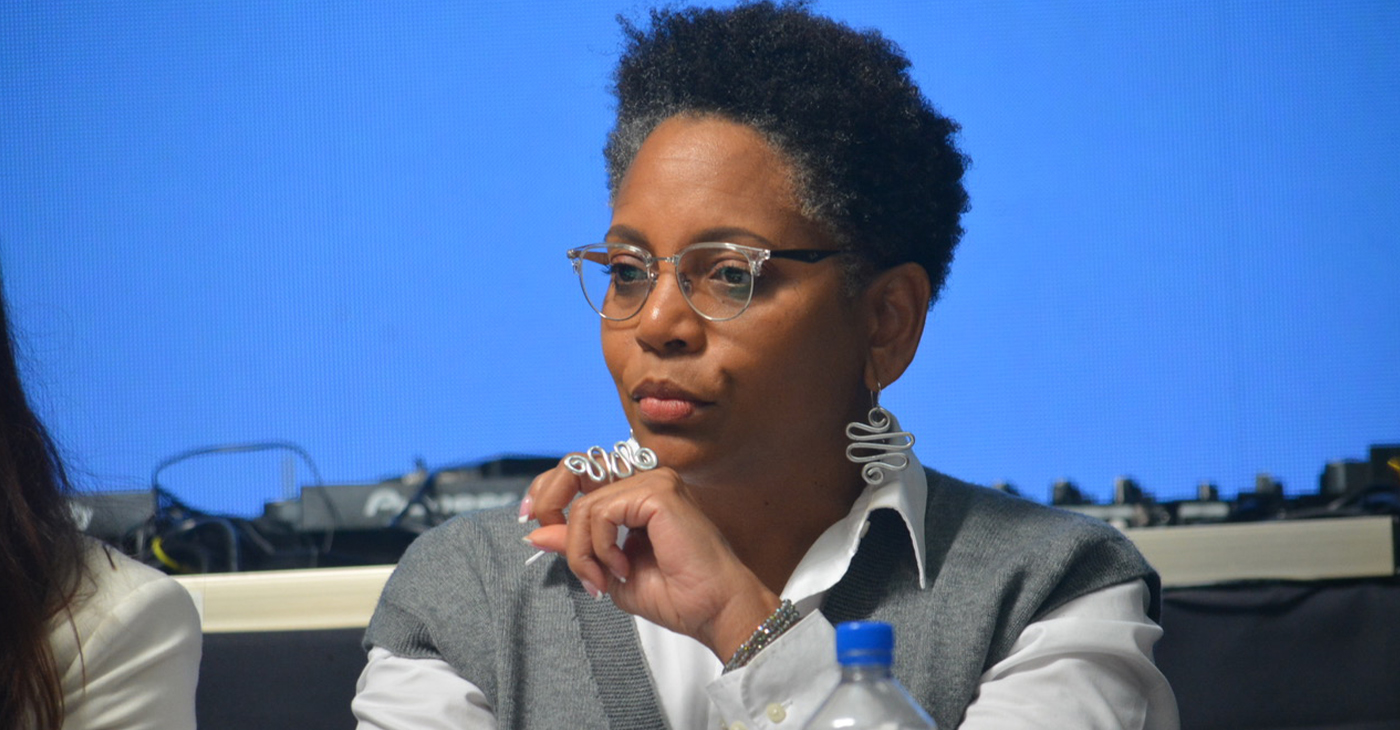
By Antonio Ray Harvey, California Black Media
The Community Housing Working Group hosted a briefing on April 23 at Cafeteria 15L in Sacramento. Discussions focused on how the housing crisis in California affects Black and Brown communities and explored ways to provide low-income families and individuals with affordable housing.
Tia Boatman Patterson, CEO and President of the California Communities Reinvestment Corporation, said “entry-level housing” is not available as it was in the past, adding that affordable units were a major point of entry into homeownership for many families in the Black community.
“My mother bought her first house when I was in junior high. It was an 850-square foot, two-bedroom and one-bathroom house in 1978. That house cost $30,000,” Boatman-Patterson said.
“A woman working part-time at JCPenney was able to afford that house. We don’t build these types of housing now. We do not build entry-level homeownership,” she added.
The Community Housing Working Group is a collection of diverse community organizations from across California working together to address housing challenges in their communities. The organization believes that solving the affordable housing crisis will require creating enough smaller, lower-cost, multi-family homes located near jobs, transit, and good schools.
The briefing included a panel discussion titled, “Exclusionary Zoning: A Look Back and a Path Forward.” Boatman-Patterson participated in that session along with Henry “Hank” Levy, Treasurer-Tax Collector for Alameda County, and Noerena Limón, consultant, Unidos U.S., and Board Member of California Housing Finance Agency.
Boatman-Patterson, a former Associate Director for Housing, Treasury and Commerce in the Office of Management and Budget for the Biden Administration, started her presentation by highlighting how exclusionary single-family zoning is contributing to continued segregation of California communities.
She said that single-family zoning originated in the Bay Area city of Berkeley in 1916.
“By creating single-family zoning and having fenced-off communities, you were able to exclude the ‘others,’” Boatman-Patterson said. “It really was a method to exclude — what they called ‘economic segregation’ — but that was a guise for racial segregation. Single-family zoning, along with redlining, became a systemic approach to exclude based on affordability.”
Title VIII of the federal Civil Rights Act of 1968 — commonly known as the Fair Housing Act of 1968 – is the U.S. federal legislation that protects individuals and families from discrimination in the sale, rental, and financing of housing. It was passed to open the doors to affordable housing.
In 1968, 65.9% of White families were homeowners, a rate that was 25% higher than the 41.1% of Black families that owned their homes, according to National Low-Income Housing Coalition. Today, those figures have hardly changed in the Black community, although White homeownership has increased five percentage points to 71.1%.
Boatman Patterson said the rate has not changed in Black and Brown communities because financing for affordable entry-level homes is almost nonexistent. The homeownership disparities contribute to the disturbing racial wealth gap in the nation, according to the National Low-Income Housing Coalition’s October 2018 report.
“We really must align the financing with the actual building of units, which we haven’t necessarily done. Because of this misalignment, I think we continue to see problems,” Boatman-Patterson said.
California Black Media
State Ed Chief Tony Thurmond Pushes Bill to Train Educators
State Superintendent of Public Instruction (SSPI) Tony Thurmond is advocating for comprehensive training for teachers in reading and math, emphasizing the urgent need to improve student academic outcomes across California. On April 24, during testimony in the Senate Education Committee, Thurmond backed Senate Bill (SB)1115, which aims to provide evidence-backed educator training. The committee passed the bill with a 7-0 vote.
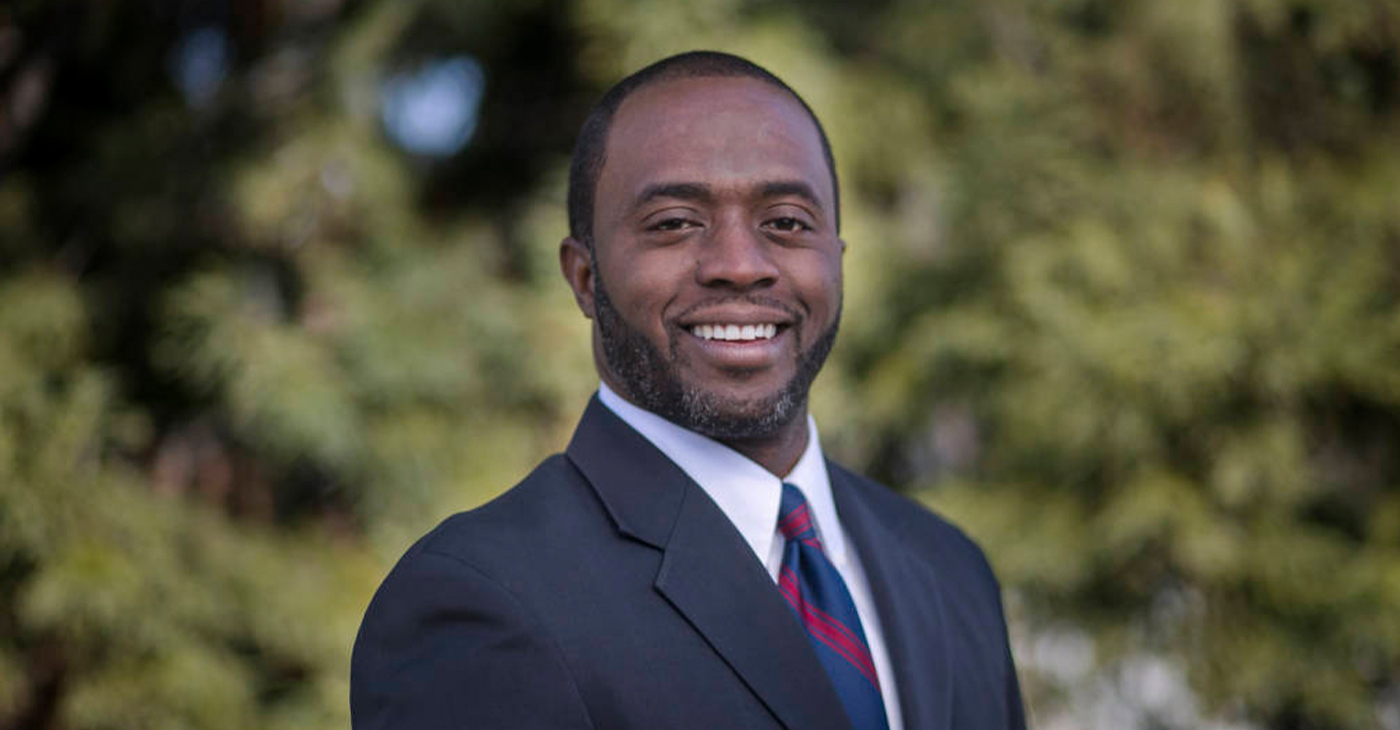
By California Black Media
State Superintendent of Public Instruction (SSPI) Tony Thurmond is advocating for comprehensive training for teachers in reading and math, emphasizing the urgent need to improve student academic outcomes across California.
On April 24, during testimony in the Senate Education Committee, Thurmond backed Senate Bill (SB)1115, which aims to provide evidence-backed educator training. The committee passed the bill with a 7-0 vote.
Thurmond pointed out to the committee that existing funding for educator training in literacy and math only covers about one-third of California’s educator workforce. SB 1115, Thurmond said, would fund the remaining two-thirds.
“This is an issue of moral clarity,” according to Thurmond. “In the fifth-largest economy in the world, and in an age when we have access to substantial brain science about how students learn, it should be unacceptable to train only some educators in the best strategies to teach essential skills.”
SB 1115 incorporates multiple research-backed methods, including phonics, and it aligns with the California ELA/ELD Framework, which encourages biliteracy and multilingualism.
Thurmond emphasized the moral imperative behind the push for enhanced training by noting that 70% of incarcerated adults struggle with reading or are illiterate.
“Every child should feel supported as they learn to read and every teacher should feel confident in their ability to support students’ foundational literacy,” Thurmond said. “SB 1115 is about ensuring that all children have the opportunity to read by third grade, and that all children have a shot at the life-changing outcomes that come from early literacy.”
The next step for SB 1115 is a hearing in the Senate Appropriations Committee on May 6.
-

 Community2 weeks ago
Community2 weeks agoFinancial Assistance Bill for Descendants of Enslaved Persons to Help Them Purchase, Own, or Maintain a Home
-

 Activism4 weeks ago
Activism4 weeks agoOakland Post: Week of April 3 – 6, 2024
-

 Business3 weeks ago
Business3 weeks agoV.P. Kamala Harris: Americans With Criminal Records Will Soon Be Eligible for SBA Loans
-

 Activism3 weeks ago
Activism3 weeks agoOakland Post: Week of April 10 – 16, 2024
-

 Community3 weeks ago
Community3 weeks agoAG Bonta Says Oakland School Leaders Should Comply with State Laws to Avoid ‘Disparate Harm’ When Closing or Merging Schools
-

 Community2 weeks ago
Community2 weeks agoOakland WNBA Player to be Inducted Into Hall of Fame
-

 Community2 weeks ago
Community2 weeks agoRichmond Nonprofit Helps Ex-Felons Get Back on Their Feet
-

 Community2 weeks ago
Community2 weeks agoRPAL to Rename Technology Center for Retired Police Captain Arthur Lee Johnson

